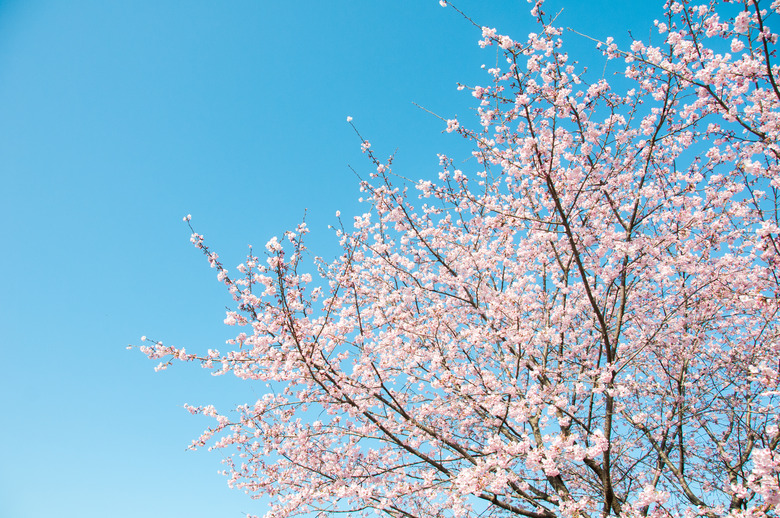How To Tell If Your Cherry Tree Is Dead
We may receive a commission on purchases made from links.
Failure to bud or leaf out in the spring is a sure sign that your cherry tree (Prunus spp.) is dead. But you can also inspect certain parts of the tree in the fall or winter to determine if it has died rather than gone dormant. In some cases, you may be able to prevent the death of a new cherry tree by altering your planting and care practices. Fruiting cherry trees will, however, die naturally in about 10 to 25 years.
Tip
A dead cherry tree will have no buds or leaves in the spring and no green tissue under its bark.
Confirming Cherry Tree Death
Confirming Cherry Tree Death
The "bark scratch test" allows you to quickly determine whether your cherry tree has died or is simply dormant. On a branch located on the main stem, scratch off the topmost layer of bark with a sharp, clean knife over about 1 square inch of bark. If you see a central strip of tan tissue with green tissue on either side, that branch is still alive. If you don't see green tissue, the branch has died.
Before deeming the tree a total loss, conduct the bark scratch test on all branches emanating from the trunk. It's possible that one branch has sustained damage and has died while the other branches remain healthy. In that case, remove the dead branch. If the branch seems to have died from an infection, do not compost it and be sure to sanitize your pruning equipment with alcohol after removing it.
Planting a New Cherry Tree
Planting a New Cherry Tree
Before you dig up the dead cherry tree and plant a new one, try to determine why your cherry tree died so you can successfully nurture the new one. Two common planting mistakes that can kill a cherry tree include planting the root ball too deep and planting the tree in poor-draining soil. However, if the cherry tree has flourished for years, it may have just reached the end of its natural life.
Take a look at the base of the old cherry tree's trunk before digging it up. Can you see a flare where the trunk begins to branch out into roots? If not, the tree may have been planted too deep, resulting in a rotten trunk at the base of the tree where it came into contact with moist soil. The roots can also rot or succumb to fungal infections if the soil remains soggy.
In addition, poor-draining soil affects the tree's respiration or oxygen intake. The tree essentially suffocates because water pushes essential oxygen out of air pockets in the soil, making it unavailable to the plant. If possible, choose a different planting site if the old tree was in a low-lying area, or build up the area where the tree was planted. Because cherry trees have relatively shallow root systems, you can also amend the native soil with organic matter, such as humus and composted animal manure, up to about 18 inches deep and in a 6-foot radius around the planting site.
Life Span of Cherry Trees
Life Span of Cherry Trees
A cherry tree's mature height indicates how long you can expect it to live under ideal conditions. If you plant a dwarf cherry tree like 'Dwarf Bing' or 'Dwarf Lapins,' for example, it may live to be only about 10 years old. On the other hand, a semi-dwarf cherry cultivar like 'Rainier' or 'Napoleon Royal Ann' could live to be about 15 to 20 years old, and a standard-sized variety like 'Kristin' or 'Windsor' would live the longest at 25 years or longer.
